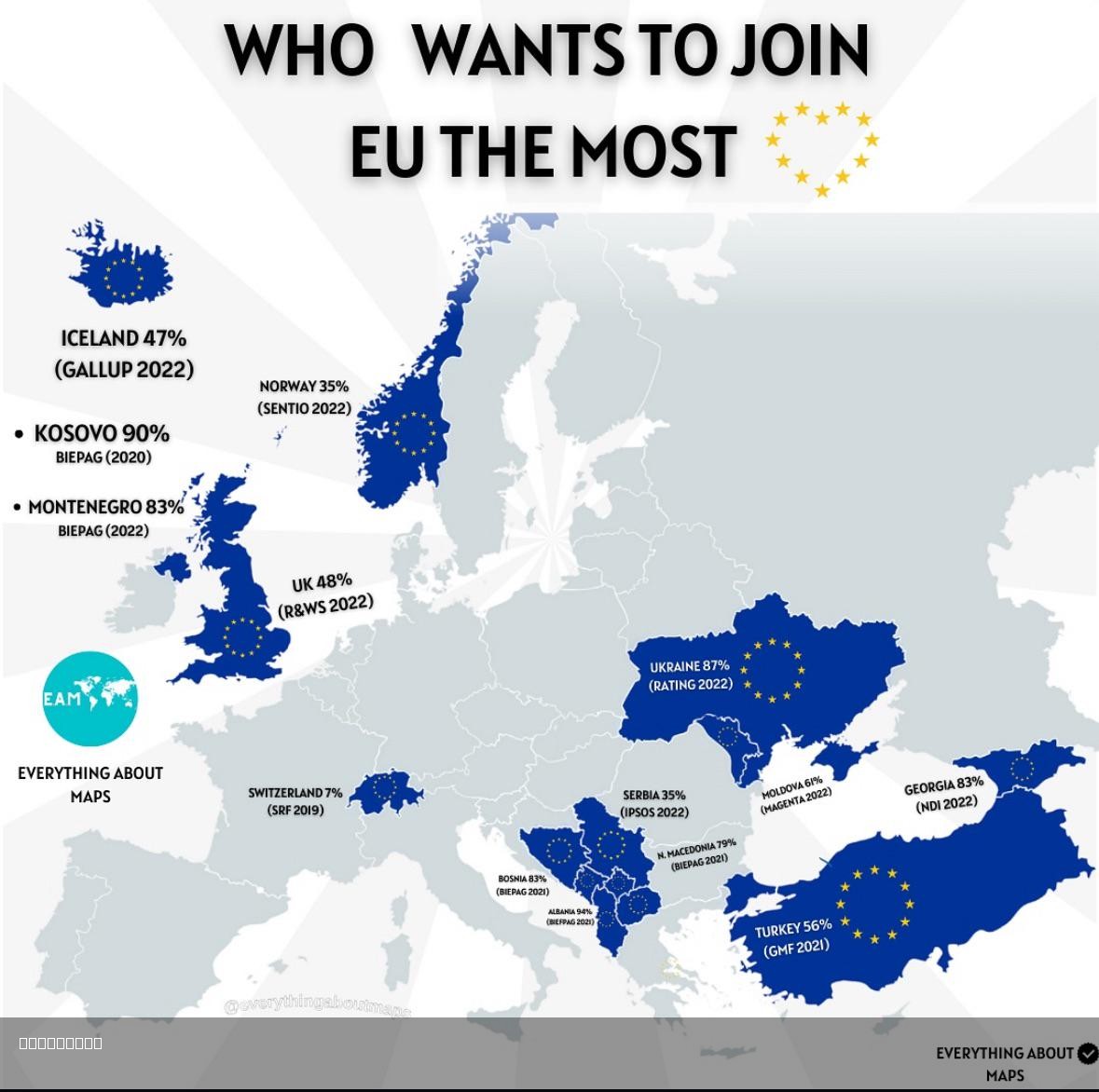EU Membership Aspirations Map


Alex Cartwright
Senior Cartographer & GIS Specialist
Alex Cartwright is a renowned cartographer and geographic information systems specialist with over 15 years of experience in spatial analysis and data...
Geographic Analysis
What This Map Shows
This map provides a visual representation of the countries in Europe that are actively seeking membership in the European Union (EU). It highlights various nations based on their levels of aspiration and readiness to join the EU, categorized into different stages of the accession process. The map underscores the political and economic motivations behind each country's pursuit of EU membership, offering a snapshot of the current geopolitical landscape in Europe.
Deep Dive into EU Membership Aspirations
The desire to join the European Union reflects broader aspirations for economic development, political stability, and social cohesion. Countries pursuing EU membership often seek the benefits associated with being part of one of the world’s largest economic blocs. For many nations, EU membership symbolizes a commitment to democratic governance, rule of law, and human rights. Furthermore, it provides access to the single market, which can significantly boost trade and investment.
Interestingly, countries that are in the EU's accession process often display varying degrees of readiness, influenced by historical, cultural, and economic factors. For instance, nations like Serbia and Montenegro are actively negotiating their accession, while others like Ukraine have recently intensified their efforts, especially in light of geopolitical tensions. As of now, Ukraine has expressed a strong desire to join the EU, particularly after the conflict with Russia, which has accelerated its push towards European integration.
In addition to political motivations, economic factors play a crucial role in the EU membership aspirations of countries. Nations like Albania and North Macedonia, while historically facing challenges related to governance and economic stability, continue to pursue EU membership as a pathway to modernize their economies and improve living standards for their citizens. For these countries, EU membership is not just a political goal but also a means to achieve economic reform and development.
Regional Analysis
Looking at the map more closely, we can categorize the aspirations by region. In Eastern Europe, countries like Ukraine, Moldova, and Georgia are at the forefront of the EU membership discussion. Following Russia's aggressive actions, these nations have not only sought closer ties with the EU but are also redefining their national identities in the context of European integration.
In Southeast Europe, the Western Balkans present a complex landscape. Countries such as Albania, North Macedonia, Kosovo, and Bosnia and Herzegovina have been engaged in a long and often frustrating journey toward EU membership. The EU has offered various incentives, including potential membership, to foster stability in the region. However, issues such as corruption, political instability, and ethnic tensions continue to impede progress.
Meanwhile, Turkey's aspirations have been complicated by ongoing political issues and public sentiment within EU member states. Although Turkey has been an official candidate since 1999, its accession talks have stalled, reflecting a broader ambivalence towards its membership.
Significance and Impact
Understanding which countries are keenest to join the EU is essential for grasping the broader geopolitical dynamics at play in Europe. The EU is not just an economic union; it represents a political and cultural identity for many nations. The aspirations for membership signal a desire for alignment with European values and standards.
Moreover, the implications of this map extend beyond mere political aspirations. EU enlargement impacts trade relationships, migration patterns, and security arrangements across the continent. As countries like Ukraine strive for EU membership, they are also reshaping their foreign policies and alliances, which can dramatically alter the geopolitical landscape.
Looking ahead, the trend towards EU membership is likely to continue, especially as countries face regional instability and seek the security and economic benefits that EU membership can provide. The EU's response to the aspirations of these candidate countries will also be pivotal, as it balances enlargement with the need for internal cohesion amidst existing member states' concerns. The ongoing dialogues between the EU and these aspiring nations will be critical in shaping the future of Europe and its role on the global stage.
Ultimately, the map entitled "EU Membership Aspirations" serves as a vital tool for understanding the shifting political landscape in Europe and the ongoing quest for integration, stability, and prosperity among its nations.
Visualization Details
- Published
- August 7, 2025
- Views
- 140
Comments
Loading comments...